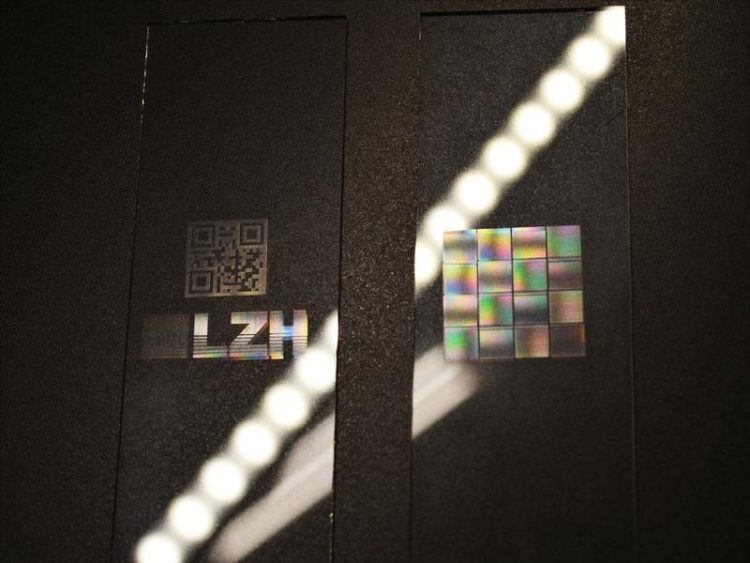Product piracy: glass marking fights counterfeiting

LZH logo and chessboard pattern with diffractive structures. Photo: LZH
Using a robust and industrially established marking laser, it will be possible to both individually and quickly mark products with a distinct certificate of authenticity.
This can be done during the packaging process. This is the vision of the project GLaSIDeE. Scientists at the LZH are working on a process for anti-counterfeit marking on both flat and curved glass surfaces.
Unique fingerprints
The laser marking process can be used to generate decorative writing, a number, or a two-dimensional bar code directly in the glass. The markings are only a few nanometers deep.
Flexibility is the main advantage, since each part can be individually marked, for example with a serial number, without effort or extra costs.
Up to now, there has been no clear identification process for markings on glass. Thus, in this project a special process should be developed with which each part is given its own individual fingerprint. The LZH is also developing a reading process for invisible markings.
In combination with each other, they will be able to reach a higher anti-counterfeit rate than conventional processes.
The project „Glass Marking using the Laser as a Safety, Identification and Design Element“ (GLaSIDeE) is subsidized by the German Federal Ministry for Economic Affairs and Energy within the Central Innovation program for Middle-sized Businesses.
Media Contact
More Information:
http://www.lzh.de/All latest news from the category: Materials Sciences
Materials management deals with the research, development, manufacturing and processing of raw and industrial materials. Key aspects here are biological and medical issues, which play an increasingly important role in this field.
innovations-report offers in-depth articles related to the development and application of materials and the structure and properties of new materials.
Newest articles

“Nanostitches” enable lighter and tougher composite materials
In research that may lead to next-generation airplanes and spacecraft, MIT engineers used carbon nanotubes to prevent cracking in multilayered composites. To save on fuel and reduce aircraft emissions, engineers…

Trash to treasure
Researchers turn metal waste into catalyst for hydrogen. Scientists have found a way to transform metal waste into a highly efficient catalyst to make hydrogen from water, a discovery that…

Real-time detection of infectious disease viruses
… by searching for molecular fingerprinting. A research team consisting of Professor Kyoung-Duck Park and Taeyoung Moon and Huitae Joo, PhD candidates, from the Department of Physics at Pohang University…





















